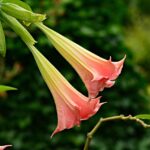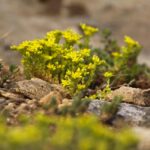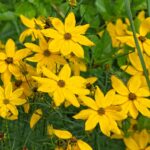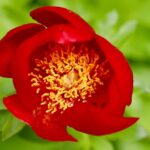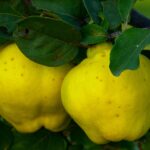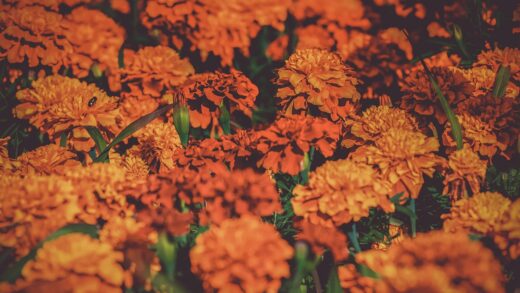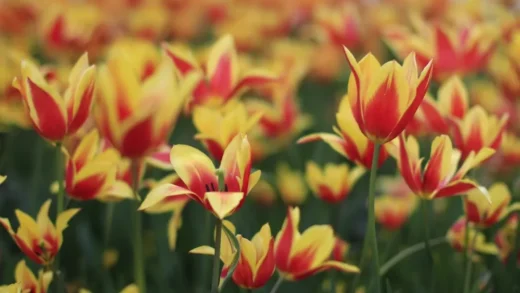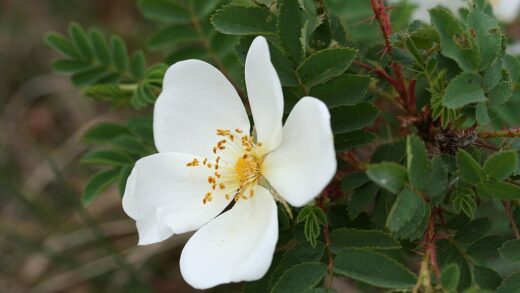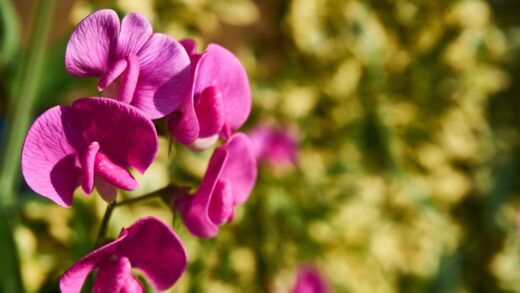The Japanese plum yew is a naturally graceful and well-behaved shrub that, when properly sited, requires very little pruning to maintain its health and attractive form. Its slow, deliberate growth rate means it will not quickly outgrow its space, and any pruning cuts made should be thoughtful and deliberate, as they will not be quickly hidden by new growth. However, this plant is also very tolerant of pruning and responds well to it, making it a versatile subject for shaping, size control, or rejuvenation. Understanding the right time, the correct techniques, and the specific goals of pruning is key to successfully managing this elegant evergreen.
The best time of year for pruning
The timing of pruning can significantly impact the plant’s response and overall health. For the Japanese plum yew, the ideal time for most pruning tasks, including shaping and size reduction, is in the late winter or very early spring, while the plant is still dormant. Pruning during this period has several advantages. The absence of foliage on surrounding deciduous plants allows for a clear view of the shrub’s structure, making it easier to decide which branches to remove. Furthermore, making cuts just before the spring growth flush allows the plant to quickly heal the wounds and direct its energy into producing new growth that will rapidly conceal the cuts.
If you need to perform minor trimming or shearing to maintain a more formal shape, this can be done in the late spring or early summer, immediately after the initial flush of new growth has hardened off slightly. This timing allows you to shape the new growth and will provide a neat appearance for the remainder of the growing season. However, avoid heavy pruning during the heat of summer, as this can place unnecessary stress on the plant. It is also crucial to avoid pruning in the late summer or early autumn.
Pruning late in the season can stimulate the plant to produce a new flush of tender growth. This new growth will not have adequate time to mature and harden before the first frosts of winter arrive, making it highly susceptible to being killed by the cold. This winter-killed growth not only looks unsightly but can also create entry points for diseases in the spring. Therefore, all significant pruning activities should be completed by mid-summer at the latest to allow the plant ample time to prepare for dormancy. The only exception would be the removal of a dead, damaged, or diseased branch, which can and should be done at any time of year it is discovered.
In summary, for major structural pruning and size reduction, aim for the dormant season of late winter to early spring. For light shaping and shearing, late spring to early summer is appropriate. By adhering to this schedule, you work in harmony with the plant’s natural growth cycles, promoting its health and ensuring a vigorous response to the pruning cuts. This thoughtful timing is a hallmark of skilled pruning practice.
More articles on this topic
Tools and techniques for effective pruning
Using the right tools is fundamental to making clean cuts that heal quickly and minimize damage to the plant. For the Japanese plum yew, a sharp, clean pair of bypass pruners is the most essential tool for cutting smaller stems, typically up to half an inch in diameter. Bypass pruners have two curved blades that pass by each other like scissors, making a clean cut without crushing the plant tissue. For larger branches, a pair of loppers will provide more leverage, and for the thickest stems, a sharp pruning saw will be necessary. It is critical that all tools are sharp to avoid tearing the bark and are sterilized with rubbing alcohol or a bleach solution between cuts, especially if you are removing potentially diseased wood.
When removing a branch, the placement of the cut is crucial. Whenever possible, prune back to a side branch or a healthy, outward-facing bud. This technique, known as a thinning cut, encourages growth in a desired direction and leaves a less obvious stub. When cutting back to a side branch, make the cut just outside the branch collar, which is the slightly swollen area where the branch joins the main stem. The branch collar contains specialized cells that will quickly heal over the wound. Avoid making flush cuts that remove the collar, as this creates a larger wound that is more susceptible to rot and disease.
For reducing the size of the plant or encouraging a denser habit, selective heading cuts can be used. This involves trimming the terminal, or end, portion of a branch back to a bud. This removes the apical dominance of the branch tip, which encourages the buds further down the stem to break and grow, resulting in a fuller, denser plant. When shearing the plant into a more formal hedge or shape, use sharp hedge shears and try to make the top of the hedge slightly narrower than the base. This ensures that sunlight can reach the lower branches, preventing them from becoming bare and sparse over time.
Regardless of the technique, the overarching principle should be to preserve the natural, graceful form of the Japanese plum yew as much as possible. Stand back frequently during the pruning process to assess the overall shape and ensure you are achieving a balanced, aesthetically pleasing result. The goal is to make the plant look as if it has not been pruned at all, with all cuts hidden within the dense foliage. This thoughtful, selective approach yields far superior results than indiscriminate shearing.
More articles on this topic
Pruning for shape and density
One of the primary reasons to prune a Japanese plum yew is to enhance its natural form and increase its density. This is particularly useful for younger plants to encourage them to become full and lush. The key technique for this is light, selective trimming of the branch tips in the late spring, just after the first flush of growth. By snipping off the last few inches of the new, bright green shoots, you encourage the plant to branch out from buds located further back on the stem. This process, repeated annually, will result in a much denser and more compact shrub over time.
When shaping the plant, aim to work with its inherent growth habit rather than forcing it into an unnatural form. For spreading varieties like ‘Prostrata’, pruning should focus on guiding its low, horizontal growth and trimming any errant vertical shoots that may detract from its ground-covering form. For upright, vase-shaped varieties like ‘Fastigiata’, pruning should enhance its verticality by removing any awkward, crossing branches or trimming side branches to maintain a narrower profile. The goal is to subtly refine the plant’s natural beauty.
It is important to prune from the inside out. Before you begin shearing the exterior, reach into the plant and remove any dead, damaged, or crossing branches. This thinning process opens up the plant’s structure, improves air circulation, and allows more light to penetrate the interior, which encourages healthier growth from within. A plant that is dense on the outside but bare on the inside is often the result of exclusively shearing the outer surface without paying attention to its internal structure.
If you are maintaining the plant as a formal hedge, regular light shearing during the late spring and early summer will be necessary. It is crucial to start shaping the hedge when the plants are young and not to wait until they have reached their desired final height. As with any hedge, always keep the base slightly wider than the top to ensure the lower portions receive adequate sunlight. The slow growth of the Japanese plum yew means a well-maintained hedge will remain neat for a long time, but it also means that correcting mistakes or renovating an overgrown hedge will be a slow process.
Rejuvenation pruning for older shrubs
Over time, an older Japanese plum yew may become overgrown, woody, and sparse, particularly at its base. Fortunately, this species responds very well to a more drastic type of pruning known as rejuvenation or renewal pruning. This process is best performed in the late winter or early spring when the plant is dormant and has substantial energy reserves stored in its root system to support a vigorous flush of new growth. This type of pruning can breathe new life into an old, tired shrub, although it requires patience as the plant recovers.
There are two main approaches to rejuvenation. The first, and more drastic method, is to cut the entire shrub down to about six to twelve inches from the ground. This hard pruning will stimulate the dormant buds at the base of the plant to break and send up a multitude of new shoots. While this method is effective, it will leave a significant empty space in the garden for a season or two as the plant regrows. It is a reliable technique for completely resetting an overgrown specimen.
A less drastic and often preferred method is a gradual renewal over a period of three years. In the first year, remove about one-third of the oldest, thickest stems, cutting them right back to the base of the plant. In the second year, prune out another third of the old stems, and in the third year, remove the remaining old stems. During this time, the plant will be sending up new, vigorous shoots from the base to replace the ones that were removed. This method allows the shrub to maintain its presence in the landscape while it is being systematically renewed.
After performing any type of rejuvenation pruning, it is important to provide good aftercare to support the plant’s recovery. Ensure the plant is well-watered during the following growing season and provide a layer of compost and mulch around its base to supply gentle nutrients and conserve moisture. Avoid heavy fertilization, which can force weak, spindly growth. The plant’s stored energy reserves are sufficient to power the initial regrowth, and a healthy soil environment is the best support you can provide for its long-term recovery.
Managing size and scale in the landscape
While the Japanese plum yew is a slow grower, over many years it can eventually exceed its intended space in the landscape. Regular, light pruning is the most effective way to manage its size and keep it in scale with its surroundings. Rather than letting the plant become overgrown and then performing a drastic pruning, it is far better to perform a small amount of selective thinning and trimming each year. This maintains the desired size and shape without ever placing major stress on the plant.
The key to size control is to make thinning cuts deep within the shrub. Identify the longest and most unruly branches that are contributing to the plant’s excessive size. Trace these branches back to a junction with a larger branch or to the main stem and remove them there. This technique reduces the overall volume of the shrub without leaving unsightly stubs or changing its natural appearance. It effectively makes the plant smaller from the inside out, which is a much more subtle and attractive method than simply shearing off the outer foliage.
When a Japanese plum yew is planted too close to a walkway, driveway, or building, it may require more frequent pruning on one side to maintain clearance. In these situations, try to use a combination of thinning cuts to remove entire branches that are growing in the wrong direction and heading cuts to shorten the remaining branches. This will look more natural than creating a flat, sheared wall on one side of the plant. However, this regular pruning is a clear sign that the plant may have been improperly sited in the first place.
Ultimately, the best way to manage the size and scale of a Japanese plum yew is through foresight. Before planting, research the mature size of the specific cultivar you have chosen and place it in a location where it will have ample room to grow without interference. By providing enough space from the beginning, you can largely avoid the need for corrective pruning and simply allow this beautiful shrub to develop its natural, graceful form with only minimal intervention required over its long life.
📷: A. Barra, CC BY-SA 4.0, via Wikimedia Commons










